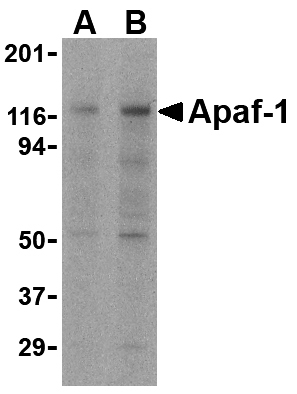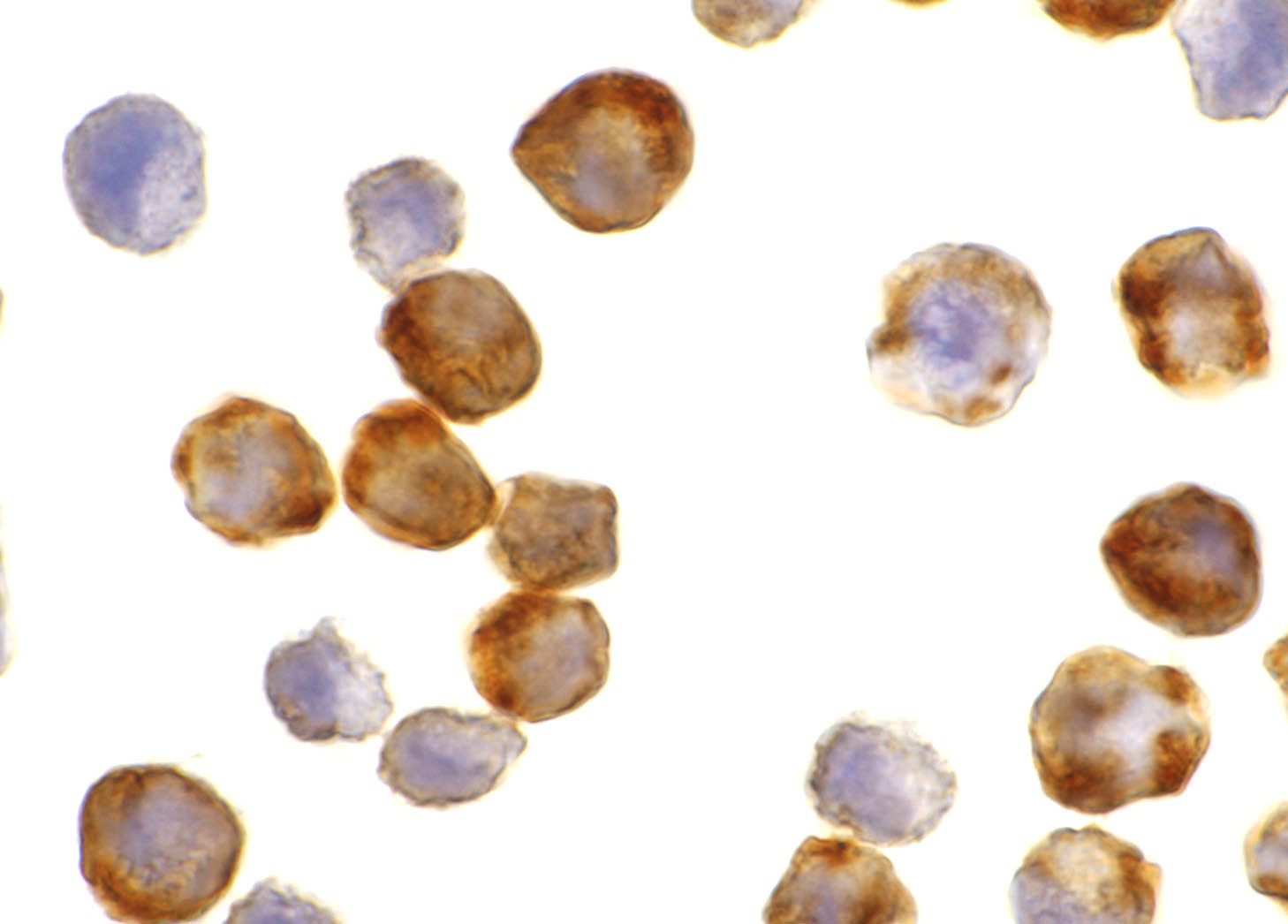Product Detail
Product NameApaf-1 Monoclonal Antibody
Clone No.mAb (Clone 2E10)
Host SpeciesMouse
ClonalityMonoclonal
PurificationImmunoaffinity chromotography purified IgG
ApplicationsELISA WB IHC
Species ReactivityHu Ms Rt
Immunogen TypePeptide
Immunogen DescA peptide corresponding to amino acids near the carboxy terminus of human Apaf1.
Target NameApaf-1
ConjugateUnconjugated
Other NamesApaf-1 (2E10), Apoptotic protease activating factor 1
Accession NoSwiss-Prot:O14727
Gene ID:317
Uniprot
O14727
Gene ID
317;
Concentration1mg/ml
FormulationSupplied in PBS containing 0.02% sodium azide.
StorageCan be stored at -20˚C, stable for one year.
Application Details
Western blot analysis of Apaf1 in K562 cell lysate with Apaf1 antibody at (A) 0.25 and (B) 0.5 mg/ml.
Immunohistochemistry of Apaf1 in K562 cells with Apaf1 antibody at 0.5 ug/mL.
Apoptosis is related to many diseases and induced by a family of cell death receptors and their ligands. Cell death signals are transduced by death domain containing adapter molecules and members of the caspase family of proteases. The mammalian homologous of the key cell death gene CED-4 in C. elegans was identified recently from human and mouse and designated Apaf1 for apoptosis protease-activating factor 1 (1,2). Apaf1 binds to cytochrome c (Apaf2) and caspase-9 (Apaf3), which leads to caspase-9 activation. Activated caspase-9 in turn cleaves and activates caspase-3 that is one of the key proteases, being responsible for the proteolytic cleavage of many key proteins in apoptosis. Apaf1 can also associate with caspase-4 and caspase-8. Apaf1 transcript is ubiquitously expressed in human tissues.
If you have published an article using product 26001, please notify us so that we can cite your literature.




 Yes
Yes



